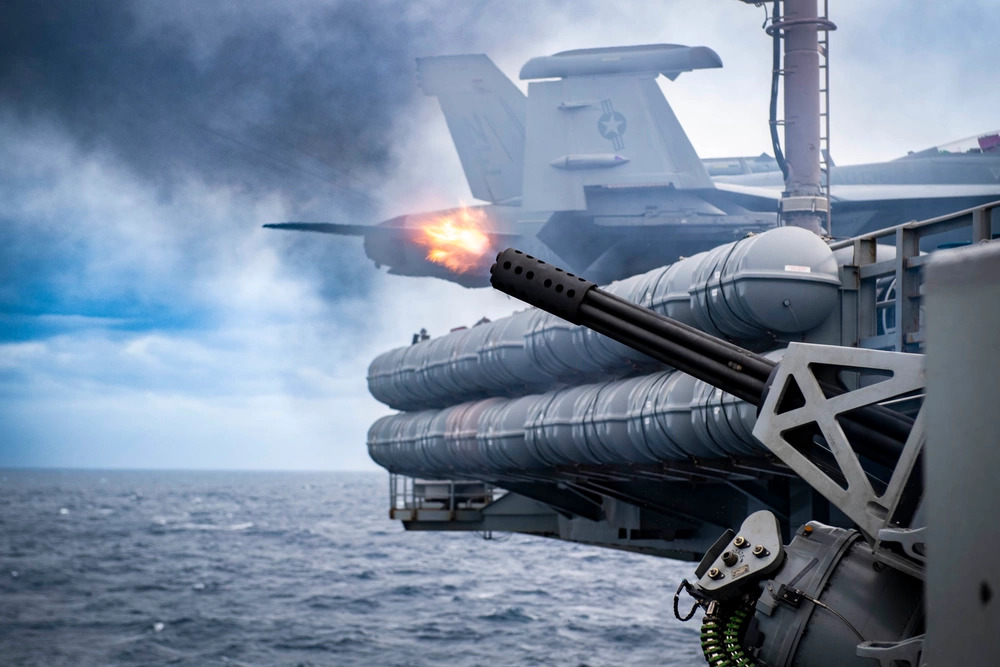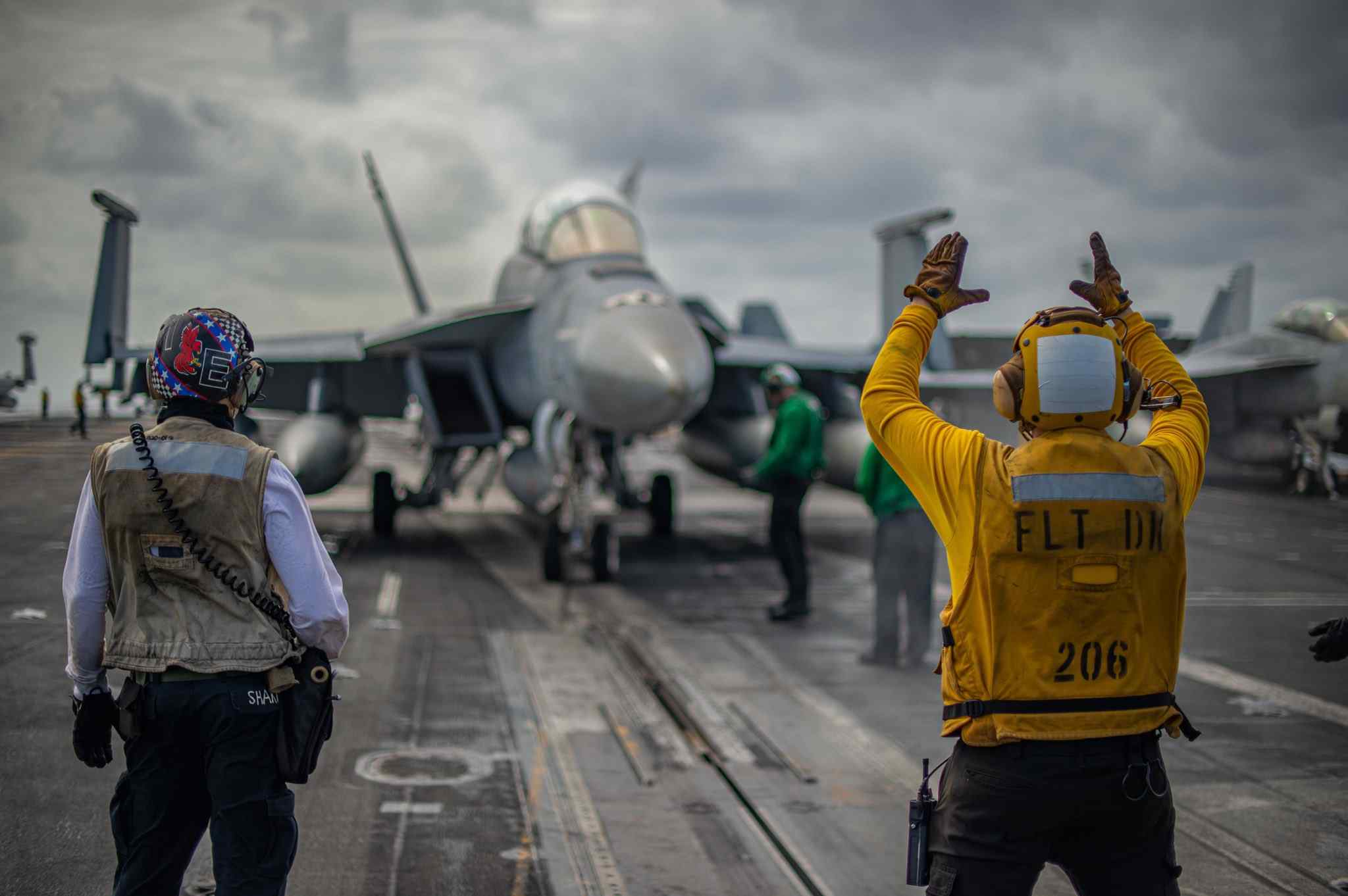US Navy destroyer USS Gravely shot down a Houthi anti-ship cruise missile at a very close range of a mile (1.6 km) on the night of January 31, according to official statements. This throws up a lot of scenarios and possibilities surrounding the shootdowns, especially a possible change of tactics by the US Navy.
However, the exciting element is using the rapid-firing Phalanx close-in weapons system (CIWS). This rotating Gatling gun fires roughly 3,000 20-mm rounds a minute, or about 50 rounds a second.
This would be a rare use of the famous weapons system in wartime and indicates how the clash with the Yemen-based non-state actor is gradually getting trickier and too close for comfort.
A statement from the US’s Central Command said, “On January 30, at approximately 11:30 pm (Sanaa time), Iranian-backed Houthi militants fired one anti-ship cruise missile from Houthi-controlled areas of Yemen toward the Red Sea. The missile was shot down by USS Gravely (DDG 107). There were no injuries or damage reported.”
Painful Cost-to-Benefit Ratio
A EurAsian Times report noted how the US and Royal Navy were finding themselves extremely costly US$2 million air defense missiles like the Aster and the RIM-162 Evolved Sea Sparrow Missile (ESSM) for intercepting cheap Houthi drones that cost as little as US$2-5,000. While all the interceptions were successful, and not a single Houthi projectile got through, it still represented an acutely painful and disadvantageous cost-to-benefit ratio.
American destroyers have been intercepting these missiles at ranges between 10 to 15 miles (16 km to 25 km), and this is the closest they have got so far. The CIWS is the final defensive system in the layered defenses of overlapping and progressively more extensive ranges to shoot down a projectile that has got through.

Who is Winning?
Experts say the fact that the CIWS was used means the Houthi missile managed to evade all the more extensive detection and interception systems powered by the Aegis missile defense platform.
“Even if the missile is cheap and the available surface-to-air missile (SAM) is costly, there is no choice but to shoot it down or it would hit the ship and cause casualties. But the employment of a CIWS means that the missile has evaded all other longer-range AD systems and come in before it was detected,” said a Captain-rank Indian Navy officer.
This throws up two possibilities. First is whether the US Navy is deliberately intercepting the Houthi missiles at closer ranges after taking into account the exorbitant AD missiles it has used to shoot down its drones and missiles so far.
With a war with Iran on the horizon following the death of three US soldiers at the Jordan outpost at the hands of Tehran-linked militias, it is conceivable that USN commanders are hoping to save the larger missiles for that eventuality.
While both Washington and Tehran have indicated they do not wish to fight each other, an unpredictable variable in a fluid and tense geopolitical situation can cause the problem to spiral out of control. Thus, however remote, that possibility cannot be discarded.
Another possibility is that the Houthi missile may have actually got through, most likely fired as a part of a salvo of between three to five missiles. The others would have been shot down. However, the US statement specified only one missile, which discards the possibility of a volley of Houthi missiles.
This, however, makes the interception even more problematic, as the projectile managed to breach the advanced missile defense radar like the Aegis before the Phalanx was cued to shoot it down. These are, however, pure speculations based on the available information until more information becomes available from the USN.
Both US Navy & Houthis Getting Practice
What can be said for sure, however, is that USN missile and gunnery crews are getting invaluable target practice. This includes honing launch sequences, firing procedures, and refining and possibly plugging gaps in their ‘kill chains’ from target detection to acquisition.
But the same also applies to the Houthis. They have acquired priceless experience by taking on massive, heavily armed Western destroyers, learning their tactics, and gaining insight into their sensors’ capabilities.
Furthermore, they can be assumed to have shared feedback with the missiles’ Iranian makers. This heavily sanctioned country built a staggeringly sophisticated and large missile and drone arsenal second only to China. That it deters even Israel and the US says a lot about the country’s technological potential.
The Houthi missile that got close was after the nearly 70 it fired on the Red Sea and the Gulf of Aden since October 31 last year. This, therefore, suggests the possibility that the group and its Iranian backers managed to improve tactics and tweak the missile to breach the Aegis this time.
The US, meanwhile, responded by striking Houthi land targets that were hosting their surface-to-air and anti-ship missiles. On January 31 at roughly 3:30 pm local Yemen time, US forces “struck and destroyed” a Houthi “SAM prepared to launch.” The missile was identified in Houthi-controlled areas of Yemen, and it was determined that it presented “an imminent threat to US aircraft.”
Later that day, around 8:30 pm, US Carney “shot down…one anti-ship ballistic missile fired from Houthi-controlled areas of Yemen towards the Gulf of Aden.” At 9:10 pm, the same warship “shot down three Iranian UAVs in its vicinity.”
A few hours later, by 1:30 am on February 1, US forces “conducted strikes against an Iranian-backed Houthi UAV ground control station and 10 Houthi one-way UAVs.” This action was in “self-defense” since US forces “determined that they presented an imminent threat to merchant vessels and US Navy ships in the region.”

Phalanx CIWS
The USS Carney has a Flight IIA version of the Aegis and a Phalanx mounted atop its rear superstructure. The Mark 15 Phalanx, which operates the M61 Vulcan cannon, has an integrated search and engagement radar and an electro-optical/infrared (EO/IR) system. Some reports put its rate of fire at 4,500 a minute.
While it is unclear which version of the Phalanx is present on the ship, open-source information indicates it is Block 1B. The EO/IR sensor also allows the Phalanx to counter small high-speed surface craft, aircraft, helicopters, and Unmanned Aerial Systems.
Phalanx production started in 1978 with the Block 0 configuration and was first installed in 1980 on the USS Coral Sea. The Block 1 configuration was installed on USS Wisconsin in 1988, and the first Block 1B installation was onboard the USS Underwood in 1999.
The Phalanx program has had an active and continuous production, upgrade, and overhaul program since 1978.
- The author can be reached at satamp@gmail.com
- Follow EurAsian Times on Google News




